PREVIOUS
SDG Goal wise programs of India (SDG 6) – Part 20
SDG Goal wise programs of India (SDG 6) – Part 20
(இதன் தமிழ் வடிவத்திற்கு இங்கே சொடுக்கவும்)
National River Conservation Plan (NRCP)
Launched Year:
- 1995.
Ministry or Nodal Agency:
- Ministry of Jal Shakti (previously Ministry of Environment and Forests).
Objectives:
- To reduce the pollution load in rivers through the implementation of various pollution abatement works.
- To improve water quality in rivers by addressing pollution from municipal sewage and industrial effluents.
- To support the conservation of rivers by creating an eco-friendly environment around river banks.
- To ensure the sustainable management and rejuvenation of river ecosystems.
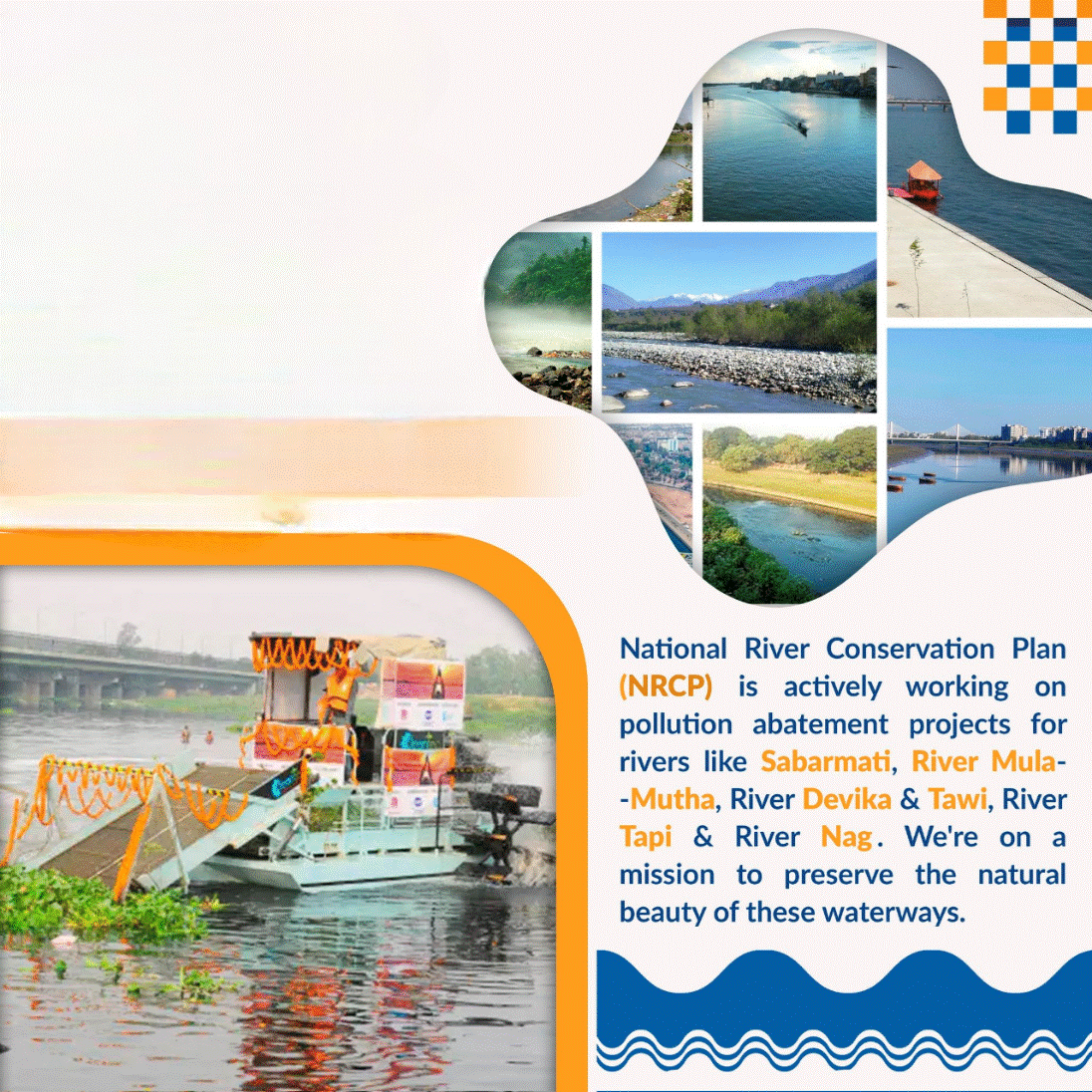
Beneficiaries:
- State Governments of India.
- Local municipal corporations and authorities.
- Communities living along polluted stretches of rivers.
- Industries and stakeholders involved in river conservation and pollution control.
- Citizens benefitting from improved water quality and access to better sanitation.
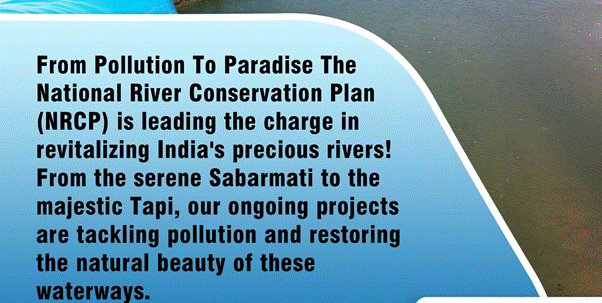
Eligibility Criteria:
- Proposals must be submitted by State Governments for projects aimed at pollution abatement of rivers.
- The projects should conform to NRCP guidelines regarding pollution status, river stretch priorities, and funding mechanisms.
- States must show commitment to bear a share of the capital cost and all operations and maintenance (O&M) costs.
- The degree of pollution in the river and the designated best use of the river stretch is considered.

Benefits:
- Significant reduction in pollution load entering rivers.
- Improvement in the overall water quality of rivers.
- Establishment of Sewage Treatment Plants (STPs) and sewerage systems.
- Development of riverfronts and improved bathing ghats.
- Conservation and sustainable use of river water.
- Prevention of open defecation near riverbanks through Low-Cost Sanitation (LCS) Toilets.
- Energy conservation through Electric Crematoria and Improved Wood Crematoria.
- Active involvement in river conservation from both government bodies and citizens.

Additional Information:
- NRCP is a centrally funded scheme aimed at preventing river pollution.
- The main goal is to conserve rivers by reducing pollution and improving their water quality.
- River conservation programs are carried out under NRCP and NGRBA (National Ganga River Basin Authority).
- The National Ganga Council, which oversees the rejuvenation and management of the Ganga, has replaced the NGRBA.
- Under the National River Conservation Plan (NRCP), the River Sal project in Goa was sanctioned by the Ministry of Environment, Forest & Climate Change.
- The aim of the plan is to prevent the pollution of rivers and improve water quality.
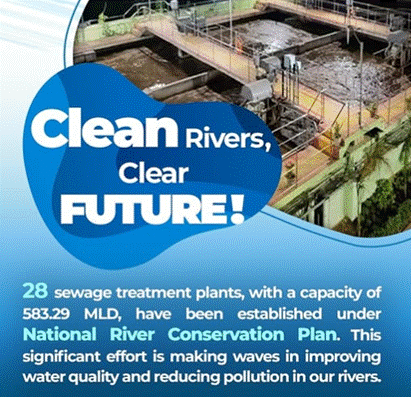
- The key activities under the NRCP, including the River Sal project, are as follows:
Sewage Treatment Plants (STPs):
- Sewage treatment plants are set up to treat the diverted sewage, helping reduce pollution entering the river and improving water quality.
Low-Cost Sanitation (LCS) Works:
- Low-cost sanitation facilities are constructed to prevent open defecation on riverbanks, reducing contamination of the river water with human waste.
Public Awareness and Public Participation:
- Efforts to raise public awareness and engage communities in river conservation play a crucial role in the success of the NRCP.
- Public participation is encouraged to ensure local ownership of the conservation process.
Electric Crematoria:
- Electric crematoria are established at cremation ghats to ensure proper cremation of bodies.
- This reduces the need for wood-based cremation, which helps minimize pollution and conserve wood.
- NRCP is a centrally sponsored scheme that operates on a cost-sharing basis between the Central and State Governments.
- The program covers polluted stretches of 34 rivers across 77 towns in 16 states.
- Under the NRCP, 2522.03 million liters per day (mld) sewage treatment capacity has been created.
- Projects may include pollution abatement works like interception and diversion of sewage, riverfront development, public awareness campaigns, and capacity building efforts.
Namami Gange Integrated Conservation Mission Programme
Launched Year:
- June 2014.
Ministry or Nodal Agency:
- Ministry of Jal Shakti.
- National Mission for Clean Ganga (NMCG).
- State Program Management Groups (SPMGs).
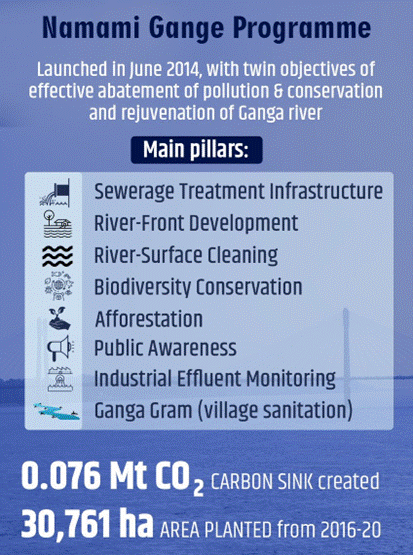
Objectives:
- Abatement of Pollution: Reduce pollution levels in the Ganga River by improving sewage treatment capacity and wastewater management.
- Conservation & Rejuvenation: Conserve and rejuvenate the river’s water quality, biodiversity, and ecosystem.
- Development of Infrastructure: Focus on developing sewage treatment infrastructure, riverfront development, and improving industrial effluent monitoring.
- Biodiversity Preservation: Enhance aquatic and riparian biodiversity, including the promotion of natural habitats.
- Public Awareness & Participation: Raise public awareness and encourage participation in river conservation activities.
- Economic Development: Sustainable development along the river through initiatives like the ‘Arth Ganga’ model, which focuses on economic activities related to Ganga.
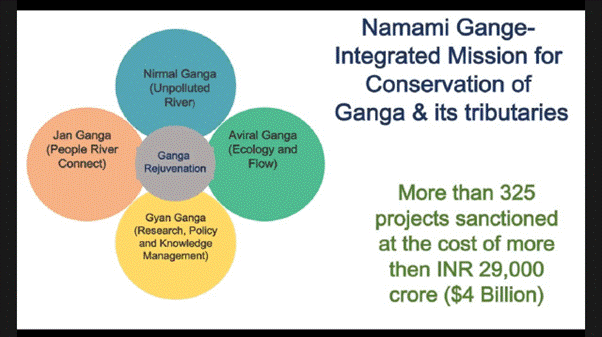
Beneficiaries:
- People living in the Ganga River basin states (Uttarakhand, Uttar Pradesh, Bihar, Jharkhand, West Bengal, etc.)
- Communities involved in activities like riverfront development, tourism, organic farming, etc.
- Wildlife and aquatic biodiversity, including the Ganga dolphin and aquatic species.

Eligibility Criteria:
- General public participation in awareness programs, afforestation, or biodiversity conservation.
- For infrastructure projects, eligibility is determined by the respective states and local authorities.

Benefits:
- Improvement in Water Quality: Improved sewage treatment plants and river cleaning measures contribute to better water quality in the river.
- Enhanced Biodiversity: Increased dolphin populations and conservation of aquatic life in the Ganga ecosystem.
- Economic Opportunities: The Arth Ganga model provides economic opportunities for communities through eco-tourism, natural farming, and sustainable business models.
- Cultural and Spiritual Value Preservation: The restoration and conservation of Ganga’s riverfronts and ghats help maintain the river's cultural significance.
- Public Awareness: Citizens, volunteers (Ganga Praharis), and local communities engage in cleaning, awareness campaigns, and afforestation activities.

Additional Information:
- The programme has a budget of ₹20,000 crore and is divided into multiple phases: short-term (entry-level), medium-term (5 years), and long-term (10 years).
- Under the programme, over 90 sewage treatment projects and riverfront development projects have been initiated across Ganga basin states.
- Special focus is given to reducing industrial effluent and wastewater disposal in the river, with monitoring and regulation mechanisms in place.
- In phase 2 (2021-26), efforts will focus on the completion of projects and enhancing the reuse of treated water.
National Perspective Plan (NPP) for Interlinking of Rivers
Launched Year:
- August 1980.
Ministry or Nodal Agency:
- Initially, Ministry of Irrigation (now Ministry of Jal Shakti).
- National Water Development Agency (NWDA) is responsible for the execution and planning of interlinking projects.
Objectives:
- To transfer surplus water from water-rich regions to deficit areas through a network of interlinking rivers.
- To improve irrigation facilities, ensure water security, and generate hydroelectric power.
- To reduce floods and droughts by balancing water distribution.
- To support industrial and domestic water supply, boost navigation, and create employment opportunities.
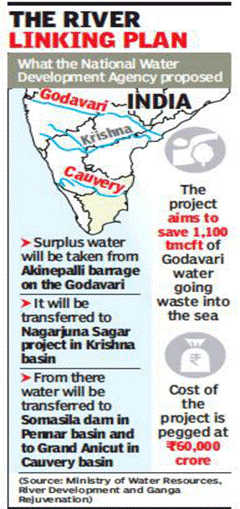
Beneficiaries:
- Agricultural sectors in water-scarce regions, particularly those dependent on surface and groundwater irrigation.
- The general population in areas facing extreme water stress (estimated 600 million people across India).
- Industries requiring consistent water supply.
- Transport sector, through the development of inland waterways.
- Regional populations prone to flooding or drought conditions.

Eligibility Criteria:
- States and regions that are facing water scarcity or drought conditions, particularly in the Peninsular and Himalayan components of India.
- States that are in agreement for water sharing and infrastructural cooperation.
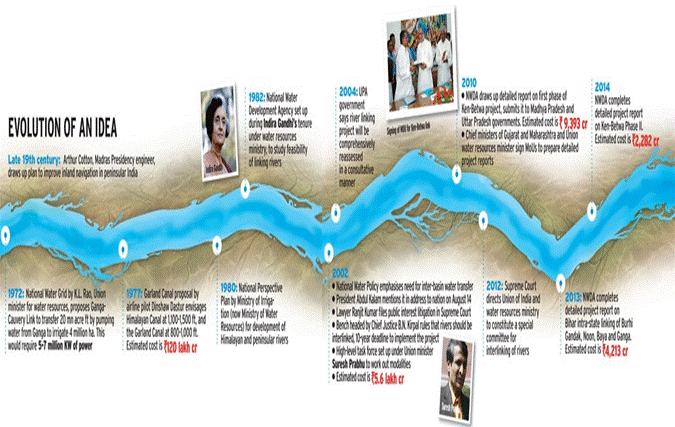
Benefits:
Irrigation:
- Expected to benefit 35 million hectares of irrigation, comprising 25 million hectares through surface water and 10 million hectares from increased groundwater usage.
Hydropower Generation:
- A potential to generate around 34,000 Megawatts of hydropower.
Water Security:
- Increased availability of water for drinking, industrial, and agricultural needs, especially in drought-prone regions.
Inland Waterways:
- Development of canals for navigation, alleviating pressure on road and rail transport networks.
Disaster Management:
- Mitigating the adverse impacts of floods and droughts by ensuring better water distribution across regions.
Economic Development:
- Employment generation in construction, maintenance, and service sectors related to water distribution, navigation, and hydropower.
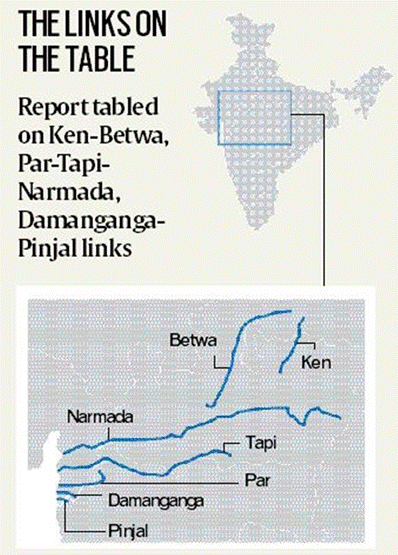
Additional Information:
- The NPP includes two main components: the Peninsular Component and the Himalayan Component.
- The Peninsular Component covers the interlinking of 16 rivers, including the transfer of water from Mahanadi, Godavari, and other rivers in southern India to water-scarce areas like Kaveri, Krishna, and Vaigai.
- The Himalayan Component focuses on the interlinking of 14 rivers, such as the Ganga and Brahmaputra, and their tributaries.
- The Ken-Betwa Link Project is the first major project under the NPP and was approved for implementation in 2021.
- The Government has formed several committees and task forces to oversee the implementation, including a Special Committee for Interlinking of Rivers and a Task Force for River Development.
- Funding for these projects is supported by various mechanisms, including NABARD under the Pradhan Mantri Krishi Sinchayee Yojana (PMKSY).

-------------------------------------


